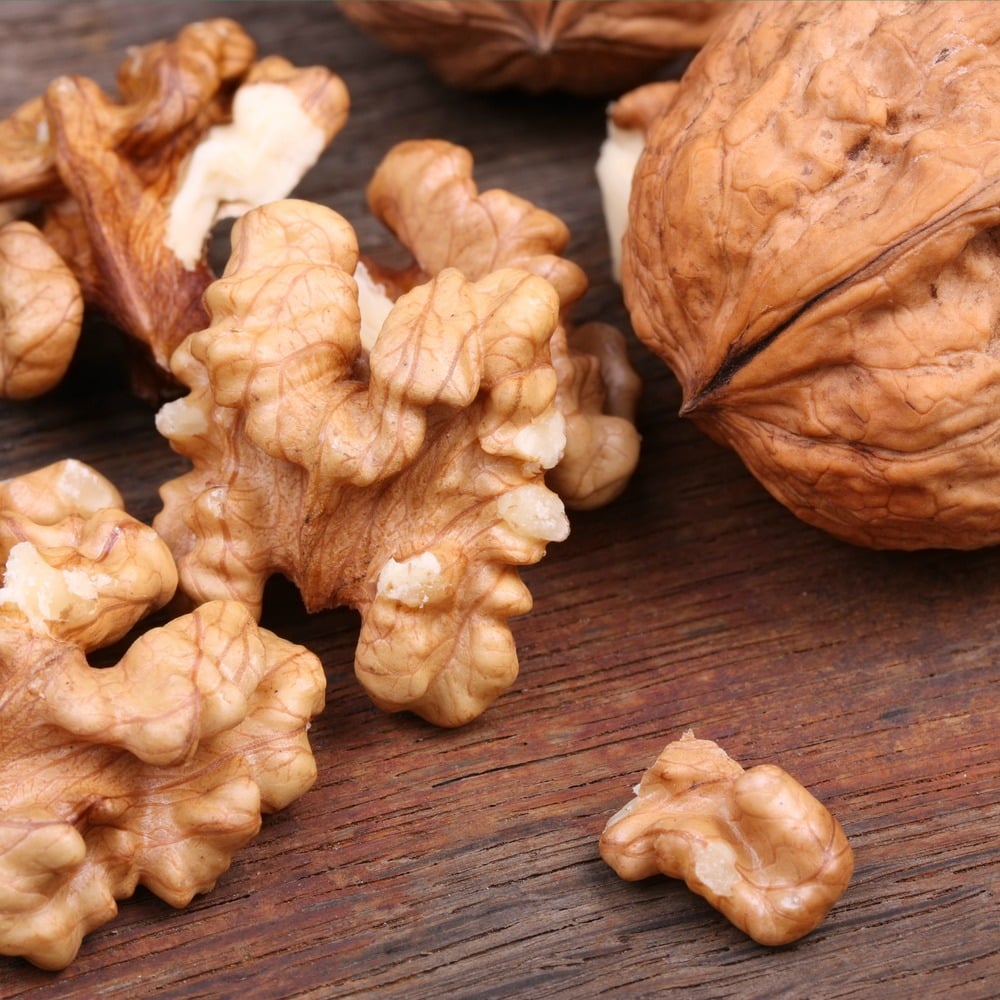This study is one of the longest to suggest that the simple act of adding about a handful of heart-healthy^ walnuts into the diet often could act as a bridge to other health-promoting lifestyle habits later in life.
The findings also reinforce that walnuts might be an easy and accessible food choice to improve a variety of heart disease risk factors when eaten in young to middle adulthood.
In this recent study published in Nutrition, Metabolism, & Cardiovascular Diseases,(2) University of Minnesota School of Public Health researchers note that a possible explanation for the results could be due to the unique combination of nutrients found in walnuts and their effect on health outcomes.
Walnuts are the only tree nut that is an excellent source of the plant-based omega-3 alpha-linolenic acid (2.5 grams/oz.), which research shows may play a role in heart health, brain health and healthy aging.^,(3,4) Additionally, just one serving of walnuts (1 oz.), or about a handful, contains a variety of other important nutrients to support overall health including 4 grams of protein, 2 grams of fiber, and a good source of magnesium (45 milligrams). Walnuts also offer a variety of antioxidants, including polyphenols.
According to Professor of Epidemiology and Community Health at the University of Minnesota School of Public Health and Lead Researcher on CARDIA, Lyn M. Steffen, Ph.D., MPH, RD, “Walnut eaters seem to have a unique body phenotype that carries with it other positive impacts on health like better diet quality, especially when they start eating walnuts from young into middle adulthood – as the risk of chronic diseases like heart disease, obesity, and diabetes elevates.”
Study Overview
In this observational, longitudinal study, partially supported by the California Walnut Commission, diet and health information was collected and analyzed from 3,023 otherwise healthy black and white men and women aged 18-30 at one of four field centers located in Birmingham, AL, Chicago, IL, Minneapolis, MN, and Oakland, CA, when the CARDIA study began in 1985-86. Self-reported diet history was taken at three times throughout the study: baseline, year seven, and year 20. Physical and clinical measurements were taken at multiple exams spanning 30 years.
Diet history was categorized into “walnut consumers,” “other nut consumers,” or “no nut consumers,” and assessed for relationships among heart disease risk factors, including dietary intake, smoking, body composition, blood pressure, plasma lipids (e.g., triglycerides), fasting blood glucose, and insulin concentrations in 352 walnut consumers, 2,494 other nut consumers, and 177 no nut consumers.
The average intake of walnuts during the study was about ¾ oz./day, and the intake of nuts among other nut consumers was about 1 ½ oz./day.
“There was a good degree of diversity in terms of the research field locations geographically speaking and the population studied,” said Steffen. “Following these black and white women and men for 30 years provides an unparalleled window of study into how lifestyle decisions made in free-living environments in young adulthood can affect health in middle-age,” adds Steffen.
Study Results At A Glance
Overall, the researchers reported the following results:
- Physical and Clinical Indicators of Heart Disease Risk After 30 Years:
- Walnut consumers had higher self-reported physical activity scores than other nut and no nut consumers.
- Compared to other nut consumers, eating walnuts was linked with a better heart disease risk profile:
- Lower body mass index
- Lower waist circumference
- Lower blood pressure
- Lower blood triglyceride levels
- Eating walnuts was associated with less weight gain over the study period, and fewer participants who ate walnuts were classified as people with obesity compared to other nut and no nut consumers.
- Compared to no nut consumers, walnut consumers had significantly lower fasting blood glucose concentrations while other nut consumers had higher LDL-cholesterol.
- Markers of Diet Quality After 20 Years:
- Including walnuts in the diet during young adulthood was favorably linked with a higher total diet quality score (Healthy Eating Index 2015) when compared to other and no nut consumers.
- Compared to other nut or no nut consumers, people who ate walnuts had the following self-reported daily dietary intakes, including a significant relationship with higher intakes of several under consumed nutrients and food groups of public health importance as outlined in the 2020-2025 Dietary Guidelines for Americans🙁5)*
“Nut consumers showed an advantage in relation to diet quality, but walnut consumers appear to have a better heart disease risk factor profile than the other groups, even after accounting for overall diet quality,” said Steffen. “The surprising, healthy shifts in overall dietary pattern of walnut consumers suggests walnuts may act as a bridge or ‘carrier food’ for helping people form healthy nutrition and lifestyle habits throughout life.”
While these results are positive and confirm earlier work from the CARDIA study on the health benefits of walnut intake,(1) randomized controlled clinical trials should be done in other populations and settings to confirm the observations in the current study. Observational studies cannot support cause and effect conclusions.
Additionally, some of the outcomes for heart disease risk factors relating to cholesterol and lipids in the current study are inconsistent with previous randomized controlled trials. (6,7) This could be related to differences in study design, including duration of the intervention (e.g., several months to 30 years) or amount of nut intake. Last, the researchers did not isolate other specific nuts in their database, so findings cannot indicate no benefit of other nuts.
This study is one of the longest to suggest that adding about a handful of walnuts to the diet every day and early on in life could be linked with benefits to overall diet quality as a heart-healthy “carrier food” that fits into any eating occasion.




